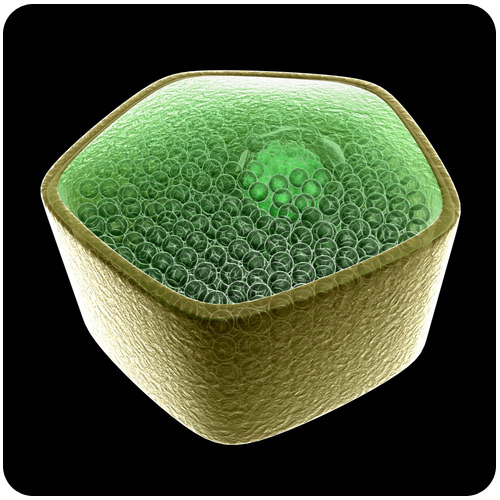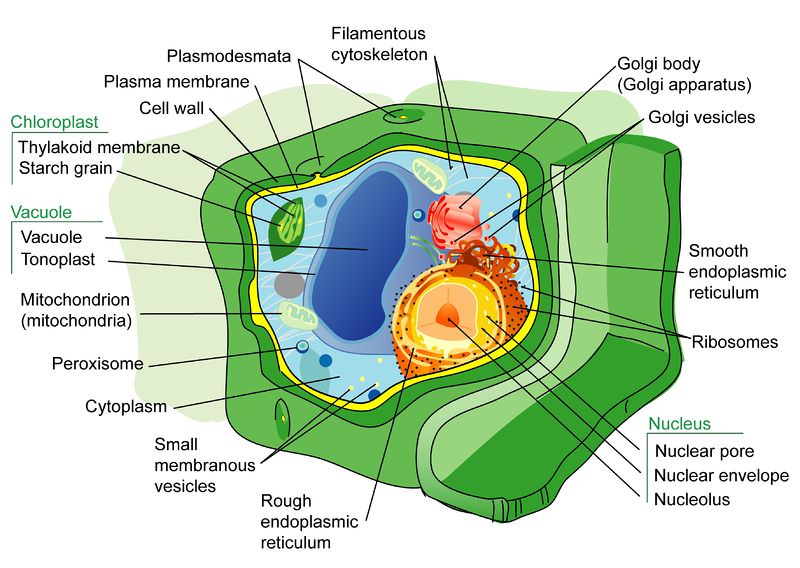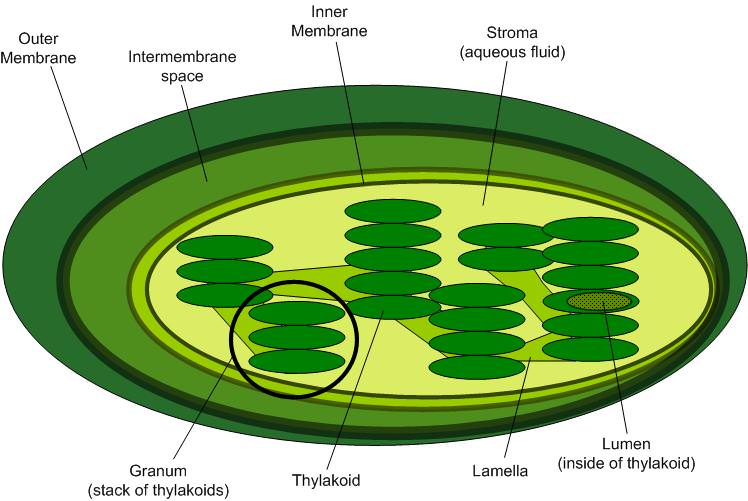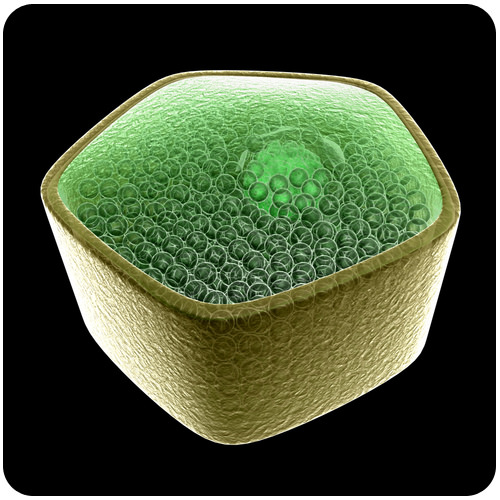2.39: Plant Cell Structure
- Page ID
- 8354
\( \newcommand{\vecs}[1]{\overset { \scriptstyle \rightharpoonup} {\mathbf{#1}} } \)
\( \newcommand{\vecd}[1]{\overset{-\!-\!\rightharpoonup}{\vphantom{a}\smash {#1}}} \)
\( \newcommand{\dsum}{\displaystyle\sum\limits} \)
\( \newcommand{\dint}{\displaystyle\int\limits} \)
\( \newcommand{\dlim}{\displaystyle\lim\limits} \)
\( \newcommand{\id}{\mathrm{id}}\) \( \newcommand{\Span}{\mathrm{span}}\)
( \newcommand{\kernel}{\mathrm{null}\,}\) \( \newcommand{\range}{\mathrm{range}\,}\)
\( \newcommand{\RealPart}{\mathrm{Re}}\) \( \newcommand{\ImaginaryPart}{\mathrm{Im}}\)
\( \newcommand{\Argument}{\mathrm{Arg}}\) \( \newcommand{\norm}[1]{\| #1 \|}\)
\( \newcommand{\inner}[2]{\langle #1, #2 \rangle}\)
\( \newcommand{\Span}{\mathrm{span}}\)
\( \newcommand{\id}{\mathrm{id}}\)
\( \newcommand{\Span}{\mathrm{span}}\)
\( \newcommand{\kernel}{\mathrm{null}\,}\)
\( \newcommand{\range}{\mathrm{range}\,}\)
\( \newcommand{\RealPart}{\mathrm{Re}}\)
\( \newcommand{\ImaginaryPart}{\mathrm{Im}}\)
\( \newcommand{\Argument}{\mathrm{Arg}}\)
\( \newcommand{\norm}[1]{\| #1 \|}\)
\( \newcommand{\inner}[2]{\langle #1, #2 \rangle}\)
\( \newcommand{\Span}{\mathrm{span}}\) \( \newcommand{\AA}{\unicode[.8,0]{x212B}}\)
\( \newcommand{\vectorA}[1]{\vec{#1}} % arrow\)
\( \newcommand{\vectorAt}[1]{\vec{\text{#1}}} % arrow\)
\( \newcommand{\vectorB}[1]{\overset { \scriptstyle \rightharpoonup} {\mathbf{#1}} } \)
\( \newcommand{\vectorC}[1]{\textbf{#1}} \)
\( \newcommand{\vectorD}[1]{\overrightarrow{#1}} \)
\( \newcommand{\vectorDt}[1]{\overrightarrow{\text{#1}}} \)
\( \newcommand{\vectE}[1]{\overset{-\!-\!\rightharpoonup}{\vphantom{a}\smash{\mathbf {#1}}}} \)
\( \newcommand{\vecs}[1]{\overset { \scriptstyle \rightharpoonup} {\mathbf{#1}} } \)
\( \newcommand{\vecd}[1]{\overset{-\!-\!\rightharpoonup}{\vphantom{a}\smash {#1}}} \)
\(\newcommand{\avec}{\mathbf a}\) \(\newcommand{\bvec}{\mathbf b}\) \(\newcommand{\cvec}{\mathbf c}\) \(\newcommand{\dvec}{\mathbf d}\) \(\newcommand{\dtil}{\widetilde{\mathbf d}}\) \(\newcommand{\evec}{\mathbf e}\) \(\newcommand{\fvec}{\mathbf f}\) \(\newcommand{\nvec}{\mathbf n}\) \(\newcommand{\pvec}{\mathbf p}\) \(\newcommand{\qvec}{\mathbf q}\) \(\newcommand{\svec}{\mathbf s}\) \(\newcommand{\tvec}{\mathbf t}\) \(\newcommand{\uvec}{\mathbf u}\) \(\newcommand{\vvec}{\mathbf v}\) \(\newcommand{\wvec}{\mathbf w}\) \(\newcommand{\xvec}{\mathbf x}\) \(\newcommand{\yvec}{\mathbf y}\) \(\newcommand{\zvec}{\mathbf z}\) \(\newcommand{\rvec}{\mathbf r}\) \(\newcommand{\mvec}{\mathbf m}\) \(\newcommand{\zerovec}{\mathbf 0}\) \(\newcommand{\onevec}{\mathbf 1}\) \(\newcommand{\real}{\mathbb R}\) \(\newcommand{\twovec}[2]{\left[\begin{array}{r}#1 \\ #2 \end{array}\right]}\) \(\newcommand{\ctwovec}[2]{\left[\begin{array}{c}#1 \\ #2 \end{array}\right]}\) \(\newcommand{\threevec}[3]{\left[\begin{array}{r}#1 \\ #2 \\ #3 \end{array}\right]}\) \(\newcommand{\cthreevec}[3]{\left[\begin{array}{c}#1 \\ #2 \\ #3 \end{array}\right]}\) \(\newcommand{\fourvec}[4]{\left[\begin{array}{r}#1 \\ #2 \\ #3 \\ #4 \end{array}\right]}\) \(\newcommand{\cfourvec}[4]{\left[\begin{array}{c}#1 \\ #2 \\ #3 \\ #4 \end{array}\right]}\) \(\newcommand{\fivevec}[5]{\left[\begin{array}{r}#1 \\ #2 \\ #3 \\ #4 \\ #5 \\ \end{array}\right]}\) \(\newcommand{\cfivevec}[5]{\left[\begin{array}{c}#1 \\ #2 \\ #3 \\ #4 \\ #5 \\ \end{array}\right]}\) \(\newcommand{\mattwo}[4]{\left[\begin{array}{rr}#1 \amp #2 \\ #3 \amp #4 \\ \end{array}\right]}\) \(\newcommand{\laspan}[1]{\text{Span}\{#1\}}\) \(\newcommand{\bcal}{\cal B}\) \(\newcommand{\ccal}{\cal C}\) \(\newcommand{\scal}{\cal S}\) \(\newcommand{\wcal}{\cal W}\) \(\newcommand{\ecal}{\cal E}\) \(\newcommand{\coords}[2]{\left\{#1\right\}_{#2}}\) \(\newcommand{\gray}[1]{\color{gray}{#1}}\) \(\newcommand{\lgray}[1]{\color{lightgray}{#1}}\) \(\newcommand{\rank}{\operatorname{rank}}\) \(\newcommand{\row}{\text{Row}}\) \(\newcommand{\col}{\text{Col}}\) \(\renewcommand{\row}{\text{Row}}\) \(\newcommand{\nul}{\text{Nul}}\) \(\newcommand{\var}{\text{Var}}\) \(\newcommand{\corr}{\text{corr}}\) \(\newcommand{\len}[1]{\left|#1\right|}\) \(\newcommand{\bbar}{\overline{\bvec}}\) \(\newcommand{\bhat}{\widehat{\bvec}}\) \(\newcommand{\bperp}{\bvec^\perp}\) \(\newcommand{\xhat}{\widehat{\xvec}}\) \(\newcommand{\vhat}{\widehat{\vvec}}\) \(\newcommand{\uhat}{\widehat{\uvec}}\) \(\newcommand{\what}{\widehat{\wvec}}\) \(\newcommand{\Sighat}{\widehat{\Sigma}}\) \(\newcommand{\lt}{<}\) \(\newcommand{\gt}{>}\) \(\newcommand{\amp}{&}\) \(\definecolor{fillinmathshade}{gray}{0.9}\)
What do plants have to do that animals don't?
Many plant cells are green. Why? Plant cells also usually have a distinct shape. The rigid exterior around the cells is necessary to allow the plants to grow upright. Animal cells do not have these rigid exteriors. There are other distinct differences between plant and animal cells. These will be the focus of this concept.
Plant Cells
Special Structures in Plant Cells
Most organelles are common to both animal and plant cells. However, plant cells also have features that animal cells do not have: a cell wall, a large central vacuole, and plastids such as chloroplasts.
Plants have very different lifestyles from animals, and these differences are apparent when you examine the structure of the plant cell. Plants make their own food in a process called photosynthesis. They take in carbon dioxide (CO2) and water (H2O) and convert them into sugars. The features unique to plant cells can be seen in the Figure below.
 In addition to containing most of the organelles found in animal cells, plant cells also have a cell wall, a large central vacuole, and plastids. These three features are not found in animal cells.
In addition to containing most of the organelles found in animal cells, plant cells also have a cell wall, a large central vacuole, and plastids. These three features are not found in animal cells.The Cell Wall
A cell wall is a rigid layer that is found outside the cell membrane and surrounds the cell. The cell wall contains not only cellulose and protein, but other polysaccharides as well. The cell wall provides structural support and protection. Pores in the cell wall allow water and nutrients to move into and out of the cell. The cell wall also prevents the plant cell from bursting when water enters the cell.
Microtubules guide the formation of the plant cell wall. Cellulose is laid down by enzymes to form the primary cell wall. Some plants also have a secondary cell wall. The secondary wall contains a lignin, a secondary cell component in plant cells that have completed cell growth/expansion.
The Central Vacuole
Most mature plant cells have a central vacuole that occupies more than 30% of the cell's volume. The central vacuole can occupy as much as 90% of the volume of certain cells. The central vacuole is surrounded by a membrane called the tonoplast. The central vacuole has many functions. Aside from storage, the main role of the vacuole is to maintain turgor pressure against the cell wall. Proteins found in the tonoplast control the flow of water into and out of the vacuole. The central vacuole also stores the pigments that color flowers.
The central vacuole contains large amounts of a liquid called cell sap, which differs in composition to the cell cytosol. Cell sap is a mixture of water, enzymes, ions, salts, and other substances. Cell sap may also contain toxic byproducts that have been removed from the cytosol. Toxins in the vacuole may help to protect some plants from being eaten.
Plastids
Plant plastids are a group of closely related membrane-bound organelles that carry out many functions. They are responsible for photosynthesis, for storage of products such as starch, and for the synthesis of many types of molecules that are needed as cellular building blocks. Plastids have the ability to change their function between these and other forms. Plastids contain their own DNA and some ribosomes, and scientists think that plastids are descended from photosynthetic bacteria that allowed the first eukaryotes to make oxygen. The main types of plastids and their functions are:
- Chloroplasts are the organelle of photosynthesis. They capture light energy from the sun and use it with water and carbon dioxide to make food (sugar) for the plant. The arrangement of chloroplasts in a plant’s cells can be seen in the Figure below.
- Chromoplasts make and store pigments that give petals and fruit their orange and yellow colors.
- Leucoplasts do not contain pigments and are located in roots and non-photosynthetic tissues of plants. They may become specialized for bulk storage of starch, lipid, or protein. However, in many cells, leucoplasts do not have a major storage function. Instead, they make molecules such as fatty acids and many amino acids.
 Plant cells with visible chloroplasts.
Plant cells with visible chloroplasts.Chloroplasts
Chloroplasts capture light energy from the sun and use it with water and carbon dioxide to produce sugars for food. Chloroplasts look like flat discs and are usually 2 to 10 micrometers in diameter and 1 micrometer thick. A model of a chloroplast is shown in the Figure below. The chloroplast is enclosed by an inner and an outer phospholipid membrane. Between these two layers is the intermembrane space. The fluid within the chloroplast is called the stroma, and it contains one or more molecules of small, circular DNA. The stroma also has ribosomes. Within the stroma are stacks of thylakoids, sub-organelles that are the site of photosynthesis. The thylakoids are arranged in stacks called grana (singular: granum). A thylakoid has a flattened disk shape. Inside it is an empty area called the thylakoid space or lumen.
Within the thylakoid membrane is the complex of proteins and light-absorbing pigments, such as chlorophyll and carotenoids. This complex allows capture of light energy from many wavelengths because chlorophyll and carotenoids both absorb different wavelengths of light. These will be further discussed in the "Photosynthesis" concept.
 The internal structure of a chloroplast, with a granal stack of thylakoids circled.
The internal structure of a chloroplast, with a granal stack of thylakoids circled.Further Reading
Summary
- Plant cells have a cell wall, a large central vacuole, and plastids such as chloroplasts.
- The cell wall is a rigid layer that is found outside the cell membrane and surrounds the cell, providing structural support and protection.
- The central vacuole maintains turgor pressure against the cell wall.
- Chloroplasts capture light energy from the sun and use it with water and carbon dioxide to produce sugars for food.
Review
- List three structures that are found in plant cells but not in animal cells.
- Identify two functions of plastids in plant cells.
- What are the roles of the cell wall and the central vacuole?
- Describe the chloroplast structure.
| Image | Reference | Attributions |
 |
[Figure 1] | Credit: User:It'sJustMe/Wikipedia Source: commons.wikimedia.org/wiki/File:Chloroplast-new.jpg License: Public Domain |
 |
[Figure 2] | Credit: Mariana Ruiz Villarreal (User:LadyofHats/Wikimedia Commons) Source: commons.wikimedia.org/wiki/File:Plant_cell_structure_svg.svg License: Public Domain |
 |
[Figure 3] | Credit: Mariana Ruiz Villarreal (User:LadyofHats/Wikimedia Commons) Source: commons.wikimedia.org/wiki/File:Plant_cell_structure_svg.svg License: Public Domain |
 |
[Figure 4] | Credit: User:It'sJustMe/Wikipedia;Flickr:stellarr Source: commons.wikimedia.org/wiki/File:Chloroplast-new.jpg ; http://www.flickr.com/photos/21187899@N03/2058985902/ License: Public Domain; CC BY 2.0 |

